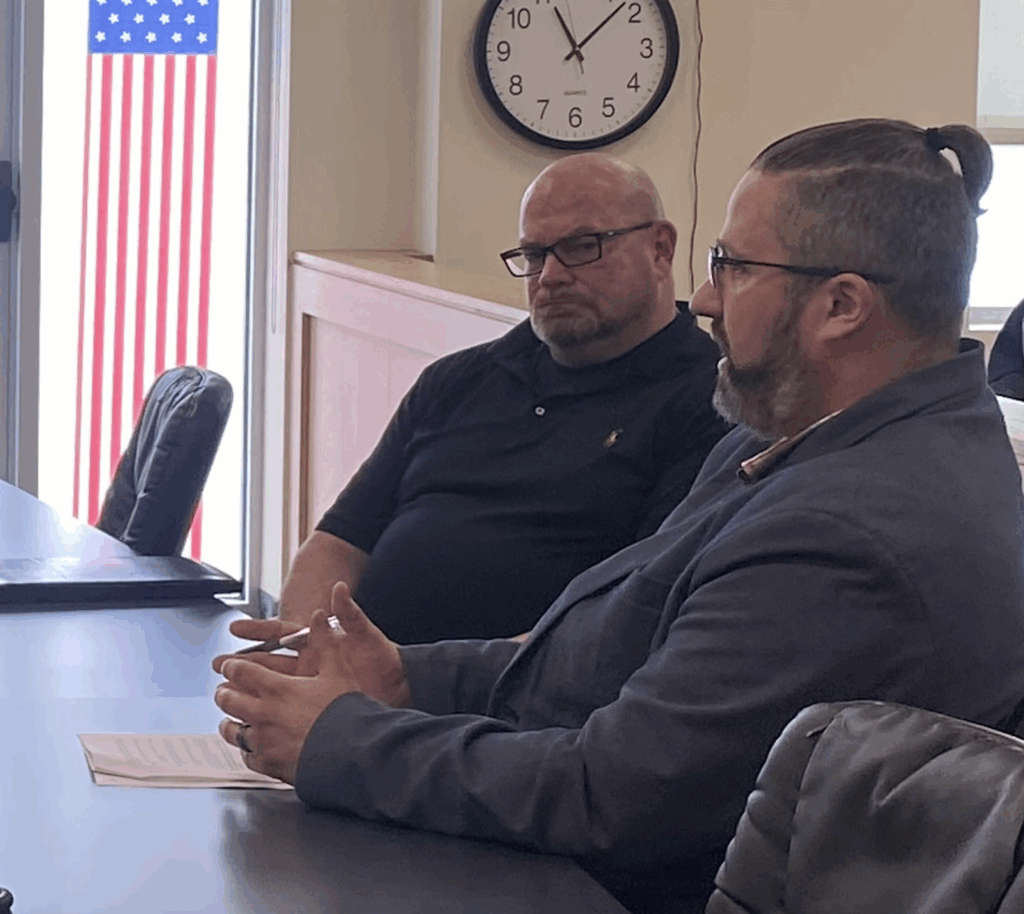County law enforcement educates community on hate crimes

What is the difference between a hate crime and a hate incident, and how does one report it? These were the questions answered at Butterfly Effect Project‘s recent public seminar, where community members learned how to pinpoint the differences between these two offenses.
After overcoming their own experiences with hateful social media attacks, BEP founder Tijuana Fulford organized an informational session titled “The Line Between Hate: Understanding and Navigating Hate Incidents and Crimes” at the organization’s headquarters last week. The seminar was held in collaboration with the Suffolk County Police Department Hate Crimes Unit, Riverhead Town’s Anti-Bias Task Force and the Suffolk County District Attorney’s Office.
Det. Sgt. Apryl Hargrove, commanding officer of the SCPD Hate Crimes Unit, and Vanessa Overland, deputy bureau chief of the Violent Criminal Enterprises Bureau and deputy unit chief of the Hate Crimes, Elder Abuse, Anti-Bias and Human Trafficking (HEAT) unit, led the presentation.
In simple terms, a hate crime is a crime motivated not by anger, but by a hatred of or a bias against a person or group of people with specific, protected characteristics defined by New York State, including race, color, national origin, ancestry, gender, religion, religious practice, age, disability and sexual orientation. However, she said proving a crime was motivated by hate — beyond a reasonable doubt in New York State — is a difficult process.
“In many crimes, we don’t have to prove the why — we may want to know the why, but the law doesn’t require us to prove the why,” Ms. Overland said. “When it comes to hate crimes, we do have to prove the why … When they’re committing the crime, saying all these hateful things, it’s very clear that’s the intent of their actions, that makes it easy, but when they don’t make those comments … it gets murkier.”
When investigating these cases, law enforcement officials also have to be certain what was said is not protected speech by the First Amendment. Ms. Overland said even when a person says “incredibly nasty and terrible things” or does something “abhorrent,” it doesn’t necessarily mean it is a crime under the law, since hate speech is still a protected language in the United States.
Ms. Hargrove went over other definitions, such as hate incidents, versus non-designated hate offenses. If law enforcement is not able to prove hateful intent or a motive beyond a reasonable doubt, this kind of situation may be deemed as more of a hate incident. A person’s behavior may be motivated by bias, which targets a protected class, but are not criminal acts. Some examples include name-calling, insults, racial slurs, disrespectful or discriminatory behavior, hateful graffiti, and displaying, posting or distributing hate material.
“Just because something that comes out of their mouth is not a crime, it doesn’t mean that it’s free of consequences — people lose their jobs, people lose their scholarships, people [lose] businesses because of that,” Ms. Hargrove said. “I can’t charge that person with a crime, but there are things that the community can do to come together and either boycott and stop using particular businesses, and that would probably hurt them more than any crime that I would have been able to charge them with.”
Ms. Overland cited a circumstance where in 2020 a Riverhead High School senior had her college admission offer and athletics scholarship rescinded after she posted a racist message on Snapchat related to the death of George Floyd in Minneapolis. A similar situation happened that same year at Shoreham-Wading River High School when a pair of students faced disciplinary action after a viral TikTok video circulated of them using racial slurs directed at a Black man.
A non-designated hate offense targets one of the 11 protected classes and appears to be motivated by hate, but it is not necessarily categorized as a hate crime. Under state law, these instances can be charged as aggravated harassment in the first or second degree, which are defined as any action intended to annoy, harass, threaten or alarm someone based on their protected characteristics.
If law enforcement can prove hateful intent, and a person strikes, shoves, kicks or subjects another person to physical contact, or attempts to threaten to do so, it can be deemed aggravated harassment in the second degree.
Any damage to a religious building or structure — such as a swastika etching — or the act of setting a cross on fire in public view also fall under the definition of this crime. If proved these actions were motivated by hate, the charges can be bumped up to a Class E felony, with a prison sentence of up to four years.
Ms. Overland stressed all of these crimes are taken very seriously by law enforcement, no matter the specific charge.
“You’re targeting somebody because of how they were born, where they’re from, things that somebody can not change — it’s not just a crime of financial opportunity, it is a crime against that person, and it’s personal,” she said. “We take these crimes, very, very seriously.”
Ms. Fulford thanked the speakers for taking the time to provide attendees with a better understanding on what constitutes a “hate crime,” and why some situations, such as what the Butterfly Effect Project went through earlier this year, fall under the definition of a “hate incident.”
Katheryn Gutierrez Palacios, who attended the seminar, said after learning about the definitions, she felt it’s important to continue to educate others on the subject of hate crimes. “I learned it really has an impact on people, and [hate crimes] are really hard to identify,” she said. “It’s really important to educate people because they might not even know what they’re doing — [asking themselves,] ‘What would I do in this situation, how would I feel?'”
Michele Lynch, a Riverhead resident, said she found the session informative and hoped this information could be taught at the local public schools. “We really need to address it, and especially [because] Riverhead is a very mixed school district,” Ms. Lynch said.
What to do if you believe you are experiencing a hate crime or hate incident:
Tell someone and call 911 for immediate assistance, and reach out to the following hotlines for further guidance:
◦ HEAT tip line: 631-852-2950
◦ SCPD Hate Crimes: 631-852-HATE
◦ SCPD Crimes Stoppers: 800-200-TIPS









